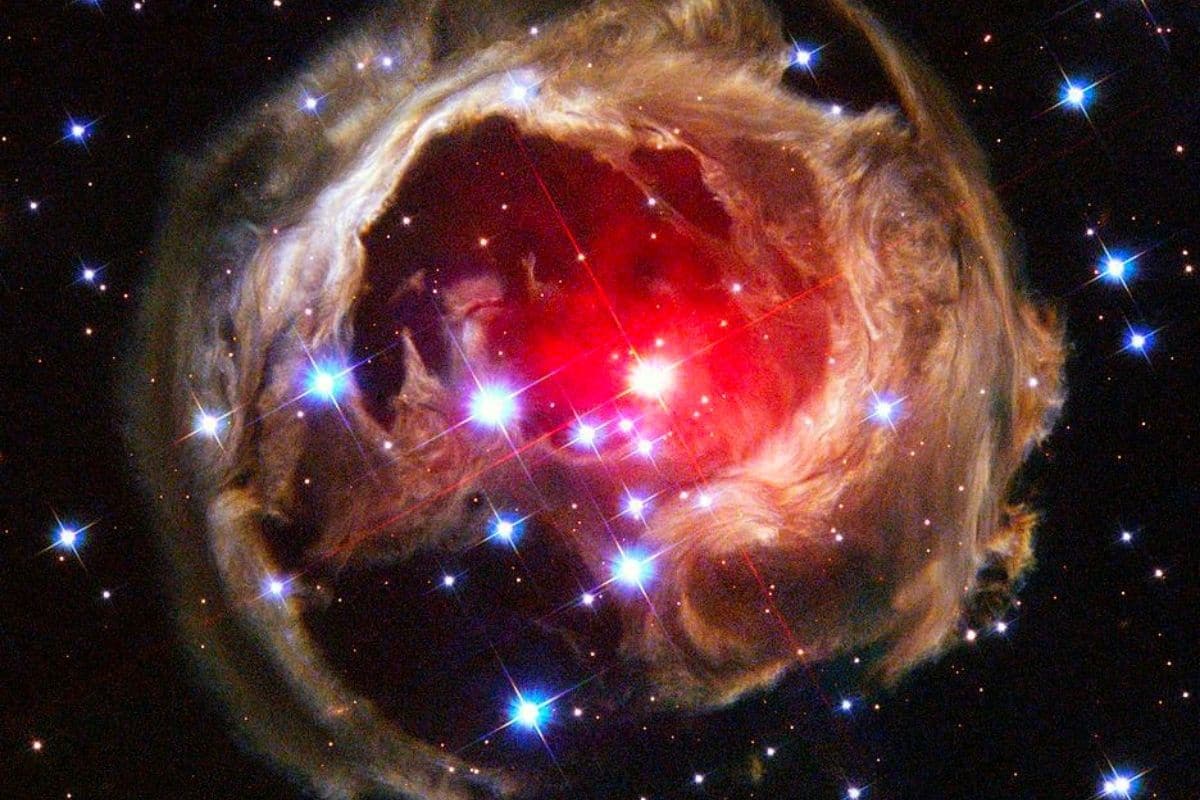

In 2002, a red variable hypergiant became temporarily the brightest star in the Milky Way. Hubble watched this star for several years and saw a unique phenomenon: a light echo.
V838 Monocerotis is a binary star located 19,000 light-years from Earth. The heavy red star is a real giant. For example, the star has a radius of 1570 solar radii (or 1570 times the radius of the sun). This makes it one of the largest known stars we know.
In January 2002, the hypergiant – which is normally barely visible – quickly became 600,000 times brighter than the sun. A few years earlier, there was a major eruption, but it went fairly unnoticed. Scientists suspect that the hypergiant has swallowed a large planet or small star. The light from the eruption then traveled through a cloud of dust surrounding the star. It seems as if V838 Monocerotis emits material, but that is not the case. Here we see the expanding flash illuminating the already existing dust clouds around the star.
Hubble took several photos of V838 Monocerotis in the period from 2002 to 2006, resulting in the following series. It is rare for astronomers to see a celestial body change in a short time. The photos clearly show how the light from the star travels through the dust clouds. The light emitted first—when the star was hotter—appears bluer. Hence the gas patches appear to have blue edges.

The gas fragments in the photo above are many trillions of kilometers long. In the photo to the right, the light echo is six light-years across. The light echo is therefore wider than the distance from the sun to the closest star: Proxima Centauri.
When the photos are pasted one after the other in a timelapse, a beautiful video is created. This video is not completely realistic, because the scenes between the photos are simulated, but it does show how a star transforms in a short time.
Source material:
Image at the top of this article: NASA / Hubble